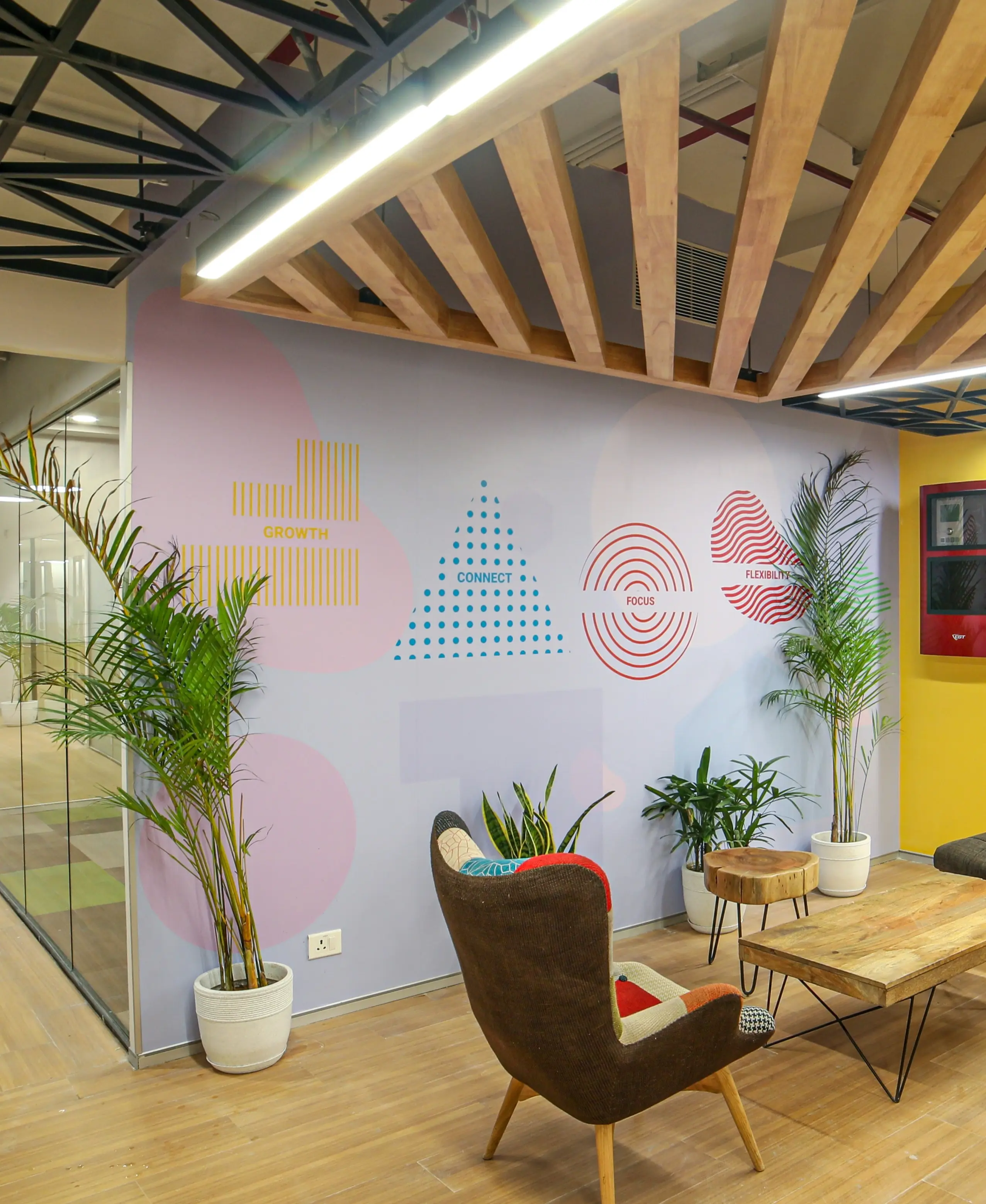
Innovative Decorating and Landscaping Ideas for Limited Spaces
Read about our landscaping ideas and transform your space with Classic London.
Introduction
You don't need a lot of space to create an interesting and useful outdoor environment. As a matter of fact, even the smallest patios, balconies, and garden corners may be turned into lovely and useful retreats with a little imagination and thoughtful planting. Creative decoration and gardening strategies can maximise your area and improve its visual appeal, whether you're working with a small balcony in a busy city apartment or a big office space.Commercial spaces become more visually appealing to clients, customers, and staff when they have well-designed landscapes and plants. This can result in more people walking into retail establishments and staying there, as well as more welcoming and comfortable working spaces. Furthermore, landscaped areas in business settings can offer spots for staff members and guests to unwind and mingle, which may strengthen social cohesion and improve a sense of community. They can also increase the area's perceived level of safety and make commercial spaces more hospitable.Unfortunately, it is challenging to effectively integrate outdoor areas or vegetation into business environment due to the restricted amount of space available in cities. These are six creative methods for planting and beautifying small outdoor areas.
Vertical Gardening
Using containers and vertical gardening are two of the most adaptable and space-efficient ways to "green" urban areas. Even the most congested urban environments may be made into luxuriant, lively spaces using these techniques. For example, wall-mounted planters, trellises, and upward-climbing modular planting systems can be used to create vertical gardens, which are ideal for balconies, alleyways, and even building sides. This method not only makes the most of the little area available but also enhances the appearance of boring walls and facades.This is complemented by container gardening's adaptability, which allows planters and pots to be relocated to accommodate variations in seasonal lighting patterns. Planters and pots can range in size from little herb pots on window sills to bigger containers on rooftops. When combined, these techniques enable urban residents to grow a wide range of plants, from ferns and flowers to vegetables and herbs, transforming unused floor and vertical areas into rich green spaces.
Decking and Multifunctional Furniture
Maximising the usefulness and visual appeal of tiny yards can be achieved through the installation of decking. Even in a small space, decks can be arranged at different levels to divide an area into separate functional zones, including eating, relaxing, or grilling areas. This tiered layout improves the usability of every area of the yard and adds visual interest. Furthermore, a variety of materials can be used for decking, including composites and standard wood. Both give durability and a distinctive appearance that can blend in with the surrounding area's architectural style.Utilising furniture with several uses helps make the most of the restricted outside areas. Benches that are also storage components offer a place to sit and keep clutter-free surroundings by hiding gardening tools, pillows, or other outdoor goods. Furniture that can be converted, such as tables that can be turned into fire pits, provides flexible options for leisure and amusement without requiring extra space for each use. These versatile furniture options let homeowners customise their settings to fit various events, from a peaceful morning coffee to an evening social gathering with friends. They are especially useful in metropolitan areas where outside space is limited.
Water Features and Strategic Plant Selection
A modest water feature can make a big difference in the atmosphere of a small area. It can add a sense of calm and an aesthetic boost without taking up a lot of room. Water elements, such as a wall-mounted waterfall, bubbling urn, or little fountain, can act as calm focal points by attracting attention and relieving tension with the sound of running water. These elements are particularly useful in metropolitan settings where traffic and noise may be oppressive; the sound of the water can filter out city noises and create a tranquil haven. Gardens become more dynamic with the visible movement of water, which also gives tiny areas a sense of life and a connection to the cycles of nature.Strategic planting selection is crucial in small yards to prevent overcrowding and reduce the time of maintenance. Choosing compact perennials and dwarf types of plants helps maintain a reasonable and suitable garden scale. Lavender, boxwood, and other succulents are examples of plants that look nice all year round and need less trimming and upkeep than their larger counterparts. The appropriate plant selection lowers the labour and material requirements for maintenance while keeping the garden's aesthetic appeal and spatial proportions.
Creating Zones and Using Mirrors
One efficient approach to make the most of a limited outdoor space and create the impression of a larger area is to divide it into separate 'zones'. This zoning can be accomplished by setting apart particular spaces for various uses, like a dining area with a table and chairs, a relaxing area with a cosy sitting, and a separate area for gardening. Because each area is designed to fulfil a certain role, the deliberate segmentation of the space not only makes it functionally organised but also gives the impression that it is larger. These zones can be visually defined by materials like varying decking levels, outdoor rugs, or paving stones, which will improve the sense of separation and make the outside area more livable and welcoming.
Mirrors are a useful addition to small areas because they reflect light and give the impression that the space is larger than it actually is. Mirrors may double the visual depth of a room by strategically placing them to reflect the garden landscape and provide the impression of a larger area. This can have a big influence on small patios or narrow sideyards. In addition to reflecting plants and other greenery, mirrors can also reflect light, which can lighten gloomy areas of a garden and give it a feeling of openness and space. Mirrors in garden design enhance the overall visual appeal of the outdoor space by maximising the sense of space and adding a touch of surprise and sophistication.
Rooftop and Hydroponic Gardening
Ground-level gardening is frequently impractical in urban settings, but rooftop gardening makes excellent use of available space. Urban residents can establish beneficial mini-ecosystems that improve biodiversity, enhance air quality, and lessen the impact of the urban heat island effect by converting underutilised rooftop surfaces into green spaces. Simple container gardens to more intricate setups with raised beds and lightweight soil systems are also possible in rooftop gardens. They successfully give a new dimension to urban living by giving inhabitants a tranquil green space for socialising and leisure in addition to serving as a haven for wildlife.In addition to rooftop gardens, hydroponic gardening offers a soilless substitute that is ideal for indoor spaces like flats and balconies. This technique enables more effective use of water and nutrients by growing plants in a nutrient-rich water solution. From compact tabletop setups to more substantial vertical installations, hydroponic systems can be configured to take up the least amount of area possible. These solutions eliminate the mess that comes with conventional soil gardening and are both clean and space-efficient. Because hydroponic systems are controlled, they also result in fewer pests and illnesses, which makes them perfect for producing a wide range of plants all year long, from ornamental flowers to leafy greens and herbs.
Conclusion
In conclusion, there is no denying the transforming potential of small-space landscaping ideas. Vibrant outdoor spaces can be created anywhere, from a busy city balcony to a small suburban backyard, thanks to creative solutions like vertical gardening, multipurpose furniture, and thoughtful plant selection. These strategies make the most of the little space that is available while simultaneously improving the standard of urban living by providing calm green areas among the concrete jungle. Water features, mirrors, and rooftop or hydroponic gardens are just a few of the components that may transform even the smallest spaces into priceless ecological assets that support biodiversity, enhance air quality, and provide tranquil havens for rest and conversation. Thus, in addition to meeting practical and aesthetic needs, these landscaping solutions support a more sustainable and healthy urban environment. Property Maintenance London





